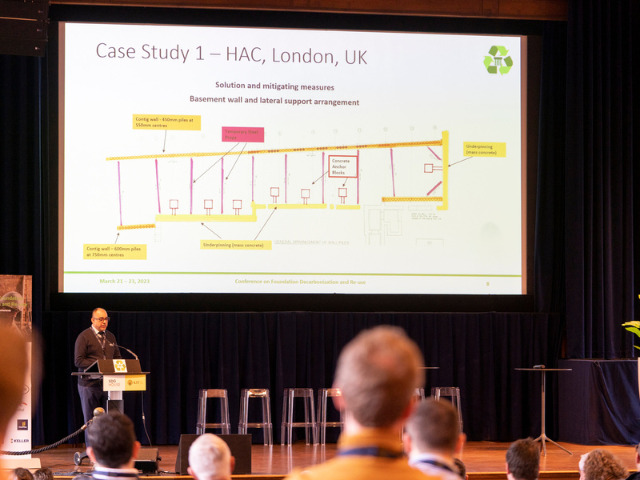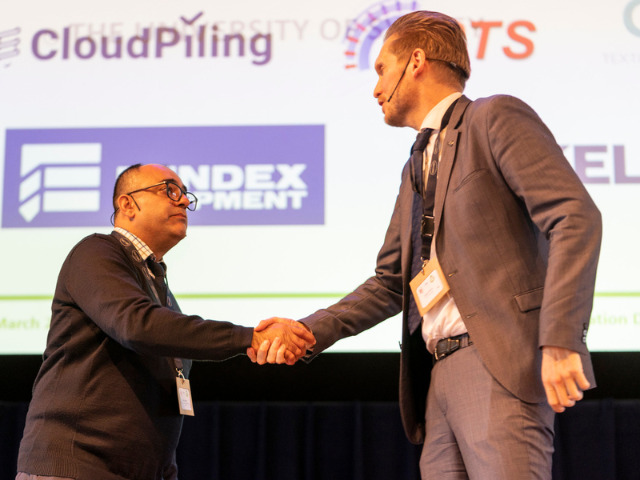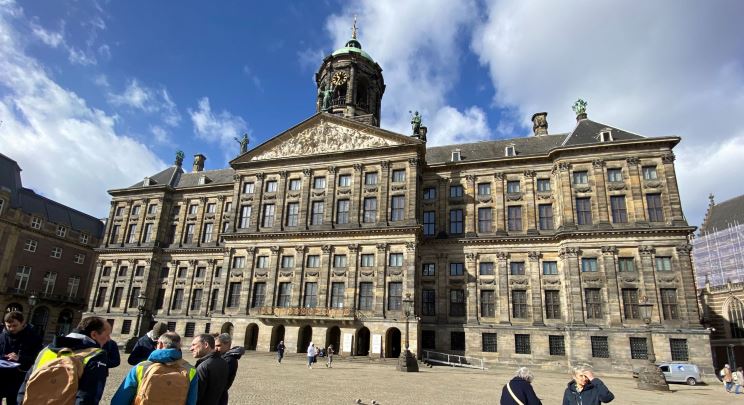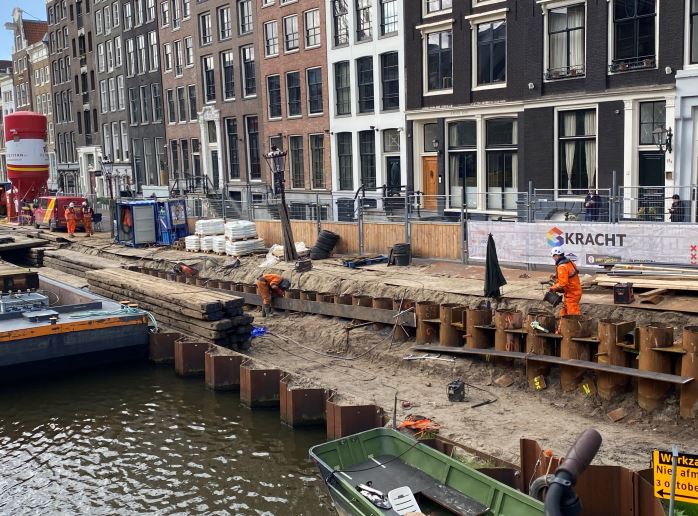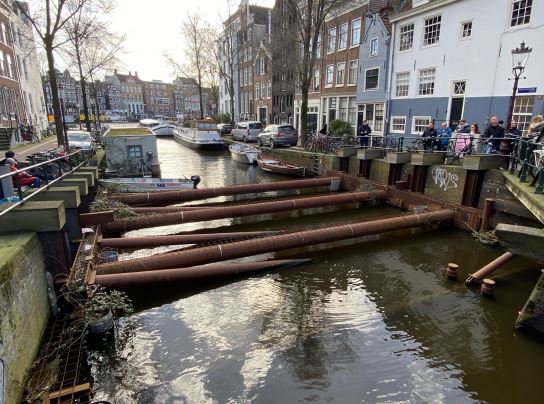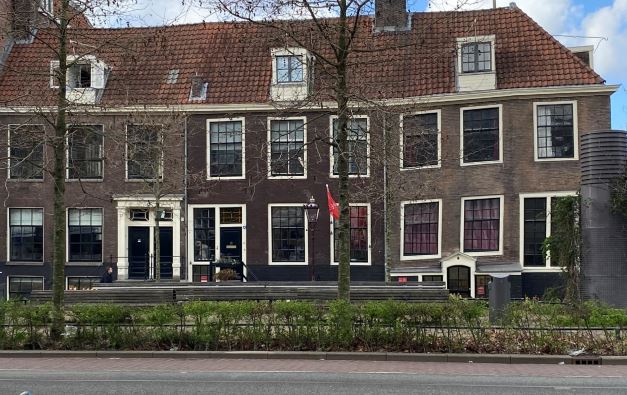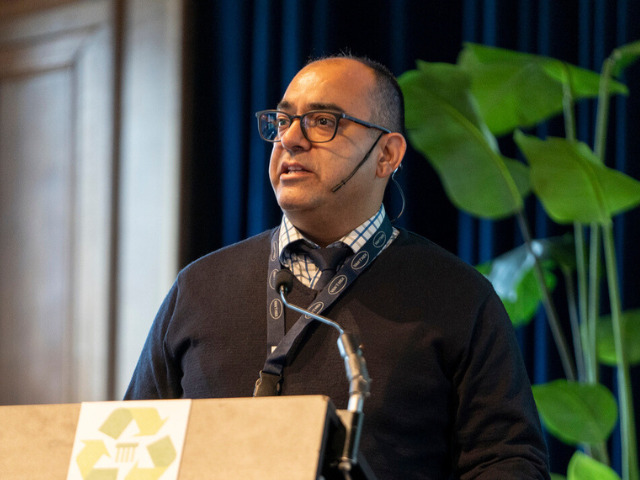
Senior Principal Geotechnical Engineer Pawan Sethi presented his paper, ‘Risks associated with reuse and remediation of foundations’ at the 2023 Conference on Foundation Decarbonisation and Reuse in Amsterdam, the Netherlands. With over 25 years’ experience in geotechnical design and construction, Pawan continues his research commencing his PhD studies at the University of Sydney in 2022.
Here Pawan shares his insights into how cities around the world are reshaping their approach to foundation design.
Tell us about the conference?
The Conference on Foundation Decarbonisation bought together some of the leading practitioners and researchers in the field of foundation engineering from around the world, to look at ways to address foundation decarbonisation and their reuse.
I was thrilled to be invited to present at the conference following the acceptance of my paper. Due to my interest and 25 years of experience in deep foundations and retaining walls, it was a wonderful opportunity for me to meet, learn and collaborate with the other international specialists.
What are some of the issues and challenges engineers today are addressing when it comes to foundations?
Urban areas are running out of clear spaces for developments.
Typically, the design life of general commercial buildings is about 40 to 50 years, whereas foundations can remain serviceable for far longer than 50 years, provided they are free of construction defects. So, the question arises, during redevelopment of a site, can we reuse the existing foundations with or without adding new foundation components to it?
One of the biggest challenges when considering reuse of foundations revolves around uncertainty with respect to the original design versus what is actually in the ground and its current structural integrity. This is particularly relevant to very old foundations or, where there is no design and construction documentation available. Other challenges may stem from accessibility for testing of existing piles and legal/commercial issues associated with future liability of the foundations if they are reused.
Fortunately, the recent advances in numerical tools and non-destructive (geophysical) testing techniques can significantly help in the assessment of existing foundation for reuse. Also, there has been a vast improvement in documenting key information, e.g., as-built information, including foundation testing details and non-conformance records. The digital methods help facilitate easy access to these records.
Is Europe and America more advanced than Australia in this field?
In a sense engineers and designers in Europe and the USA have had to consider their built environment differently because it’s denser and more mature. In comparison, Australia’s built environment is relatively young and does not have anywhere near the old infrastructure that is in Europe.
America is in the process of upgrading its aged infrastructure and authorities have been actively assessing, and where appropriate, reusing existing bridge foundations. Increasingly, in the case of mature built environments, the emphasis tends to be on asset management; getting more out of what’s already there because of the space constraints and to reduce carbon burden. Whereas in Australia, we haven’t been forced to think about that because a lot of our development sites are greenfield, where we are still putting the first structures in place. It’s just not at the front of our minds.
Having said that, when we talk about our own urban environment, space is at a premium and it is highly contested over. So yes, there is much to learn from the experience of other countries who have had to tackle these issues before us.
‘They have been doing this around the world for many years, especially in Europe with the reuse of timber piles in places like the Netherlands, Germany, and Sweden.’- Pawan Sethi
Tell us a bit more about furthering your studies in the field?
My PhD research is titled: ‘Achieving sustainable outcomes through the reuse of deep foundations and retaining structures’, with particular reference to the presence of imperfections and development of remedial solutions.
My main motivation for the research at the University of Sydney is about learning and then building on that learning. Obviously, I’m trying to contribute or produce something original and adding to the current research advances in this field. My research is focusing on:
- Technical appraisal of existing foundations
- Design and construction aspects associated with reuse of foundations and retaining walls
- Mitigating risks associated with implementation technical solutions to improve foundation capacity.
One of the more enjoyable aspects has been to brush up on geotechnical engineering ‘fundamentals’ by revisiting textbooks and other technical documents. Combining this with my 25 years of professional experience, I think makes a good mix to undertake such a challenge.
Not many people tackle a PhD going from industry to academia, it’s usually the other way round. Owing to my mixed (consulting and contracting) professional experience, I am keen to explore ways through my research in which I can personally contribute (in a small way) to bridging academia and the industry.
Tetra Tech have been very supportive of my studies, and I’m doing it part-time. This allows me to work four days a week and dedicate at least one day to my research, along with the weekends and everything in between. The aim is to wrap it up in five to six years, so it’s a long road but I’m up for the challenge.
As an engineer specialising in Deep Foundations, how has this influenced your research?
My initial interest was sparked when I was working with a specialist piling contractor in the UK, followed by further exposure to deep foundations when I moved to Australia from England in 2008. Even at that time significant research was being undertaken in the reuse of foundations in inner cities in the UK and there was a clear recognition within industry that this area of reusing foundations had a huge potential to contribute to achieving sustainable and economic outcomes.
Having gained experience on large projects; large foundations, which can be extremely expensive to install, generally remain serviceable and robust for a very long time (unless there are construction defects or durability issues). It is very important that we should be extracting maximum service out of the existing foundations i.e., doing our best to reuse them for multiple development cycles.
As engineers we all have a role to play in helping create sustainable solutions in as many aspects of our built environment as possible.
Would you encourage other Engineers to take the opportunity?
The opportunities available through Tetra Tech to develop yourself both professionally and personally are amazing. I encourage our developing professionals to explore new technologies and ideas, write and present papers, undertake research and expand their skills to continue to achieve their career goals.
The collaboration of different cultures coming together to share knowledge and experiences, both professional and personally is a wonderful experience. You are never too old to learn and with the support of a global company like Tetra Tech, who leads with science, the opportunities remain endless.
Connect with Pawan at Pawan.Sethi@tetratech.com
